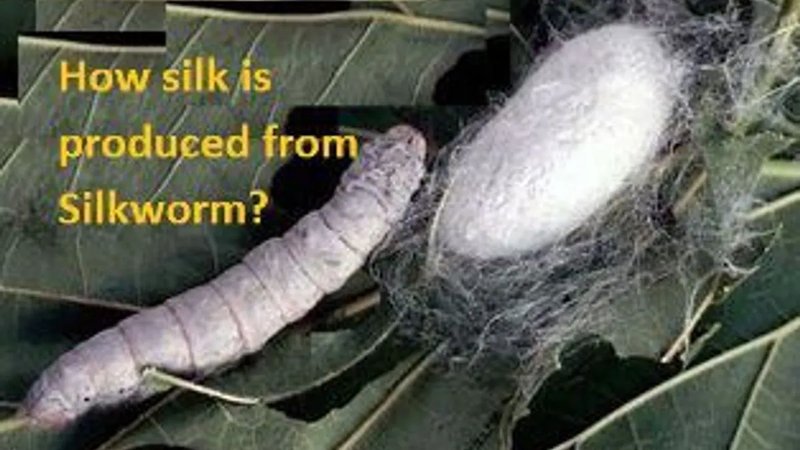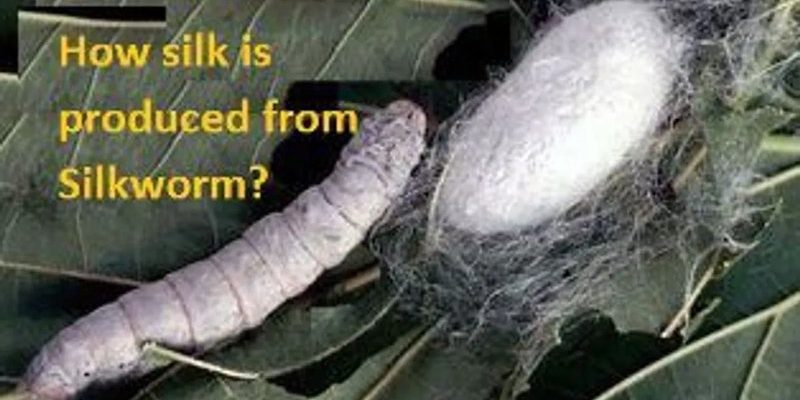
Imagine sipping coffee with a friend who’s fascinated by how sustainable practices can change industries. Let’s dive into the methods of extracting silk without causing harm, making it not only more ethical but also a wonderful win for our planet. You might be surprised at how these little changes can make a big difference!
The Lifecycle of the Silkworm
To really understand how silkworm silk is extracted, it’s crucial to know a bit about the *Bombyx mori*, which is the silkworm species most commonly used for silk production. This little critter goes through several stages in its life: from egg to larva (the caterpillar stage), then to pupa (cocoon stage), and finally into a moth.
During its larval stage, the silkworm munches on mulberry leaves and grows rapidly. Once it’s ready, it spins a cocoon made of silk fibers, which can be extremely long—up to a thousand meters! The transformation into a moth occurs inside this protective layer. Normally, this is where the extraction process would begin, but things are changing to make it eco-friendlier.
Traditional Silk Extraction Methods
Traditionally, silk extraction involved boiling the cocoons to kill the pupa inside. While this method was effective in producing long, continuous threads of silk, it raised ethical concerns. Many people questioned the morality of sacrificing living beings for luxury fabrics.
Despite this, traditional methods are still used in many parts of the world, and some silk types created this way have been revered for centuries. The key point here is that while this method yields beautiful silk, it hasn’t always considered the well-being of the silk moths.
Emerging Ethically-Sourced Silk Techniques
Here’s where the magic happens! New approaches are emerging that allow us to harvest silk without harming the silkworms. One of these techniques is called *”peace silk”*, also known as *”ahimsa silk.”*
Peace silk is produced by letting the silkworms complete their metamorphosis into moths before their cocoons are harvested. This means the moths can break free, flutter around, and continue their life cycle. The silk harvested this way tends to be shorter and less lustrous, but many people appreciate its ethical background, making it a popular choice among eco-conscious consumers.
How Is Peace Silk Made?
If you’re curious about the process of making peace silk, it’s relatively straightforward! Here’s how it works:
- Egg Stage: The process begins with silk moth eggs being laid.
- Larval Stage: Once they hatch, the silkworms feast on mulberry leaves to grow.
- Cocoon Stage: They spin their cocoons, wrapping themselves in silk.
- Transformation: Instead of boiling the cocoons, they are left for the moths to emerge.
- Harvesting: Once the moths have left, the remaining silk is collected.
By allowing the moths to complete their lifecycle, this method offers a less invasive approach to silk production.
The Benefits of Ethical Silk Production
Switching to more ethical silk production methods has benefits that go beyond just the treatment of silkworms. Here are a few reasons why this approach is gaining traction:
1. **Sustainability**: Peace silk is often produced in a way that supports biodiversity and eco-friendly practices.
2. **Quality**: While peace silk may not have the same luxurious sheen as traditional silk, many people find its unique texture appealing and appreciate its natural origins.
3. **Consumer Awareness**: More consumers are becoming conscious of where their products come from, leading to a greater demand for ethically sourced goods.
This shift not only supports the welfare of silkworms but also encourages environmentally friendly practices throughout the textile industry.
The Role of Biotechnological Advancements
Biotechnology is playing a revolutionary role in the silk industry, too. Scientists are experimenting with ways to mimic the qualities of silk without relying solely on silkworms. For instance, researchers have been able to produce silk proteins in the lab using yeast and bacteria.
This lab-grown silk can be engineered for specific characteristics, such as strength or elasticity, which can lead to innovative applications beyond just clothing. You might be wondering how this might change the future of fashion and textiles. The possibilities are pretty exciting!
Comparing Traditional and Modern Silk Techniques
Comparing traditional silk extraction with modern ethical methods highlights a significant shift in consumer values and industry practices.
| Feature | Traditional Silk | Ethical Silk |
|————————-|—————————|——————————–|
| **Moth Welfare** | Killed during extraction | Moths allowed to live |
| **Silk Quality** | Long, shiny threads | Shorter, less lustrous fabric |
| **Sustainability** | Often harmful to ecosystems| Environmentally friendly |
| **Consumer Demand** | Steady but declining | Growing rapidly |
As people become more aware of the implications behind their purchases, the demand for ethical silk is likely to continue rising. In a world where choices matter, opting for peace silk could be a step toward a more conscious consumerism.
The Future of Silk Production
Looking ahead, the future of silk production seems bright, especially with the rising popularity of ethical practices. As we dive deeper into sustainability, newer methods will likely emerge, further minimizing impacts on both the environment and living creatures.
Moreover, the integration of technology and eco-friendly practices could lead to innovative solutions that not only cater to the luxury market but also protect our planet. It’s an exciting time in the textile industry, as we rethink how materials are produced.
In conclusion, understanding how **silkworm silk is extracted without harming moths** opens up a conversation about ethics in the fashion industry. By choosing methods that respect and protect these tiny creatures, we can enjoy the beauty and luxury of silk while supporting a sustainable future. Next time you see a silk garment, think about the journey it took—one that can embrace both nature and innovation!

